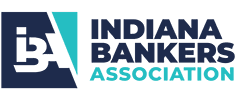
Providing the Insight and Clarity on ATR-QM Rules' Impact on Your Consumer Protection Strategy.
We provide advice to help your team originate loans in ways that comply with the latest ATR/QM rule.
Documenting applicants' ability to pay may seem straightforward. But sometimes, it can be challenging to fit real-life scenarios into a regulatory box.
The TCA team understands these challenges, the complex rules for validating and documenting ATR, and the new requirements for originating QM loans.
As a result, we can show you how to minimize your ATR/QM risk when originating mortgage loans.
We start by getting a complete picture of your operations to understand the QM and non-QM loans you offer and the business strategy behind that product mix.
We review your policies, procedures, and training during our exam and recommend modifications to create a more airtight compliance strategy.
For example, we scrutinize your underwriting practices, ensuring that you're considering all eight key factors, such as a prospective borrower's income and assets, debt-to-income ratio, and credit history, when determining someone's ability to repay a mortgage.
We also check that you're correctly using third-party records to verify borrowers' information and whether you're documenting your process sufficiently.
Through our exploration, your vulnerabilities become apparent, and whether your overall ATR/QM risk strategy is appropriate for your bank's size, location, and goals. Additionally, we also suggest improvements to help you address consumer protection laws.
Our review also entails the following:
- Checking whether you have a consistent way of calculating DTI ratios
- Determining how you preserve and track loan documentation for the required three years.
- Evaluating the effectiveness of your training and how you're keeping loan officers, loan processors, and board management up to date on the newest ATR/QM wrinkles.
- Assessing whether your monitoring schedule is sufficient
Our exam will give you confidence that you're complying with the letter of the law, ensuring that your policies and procedures illustrate that you're taking appropriate steps to determine borrowers' ability to repay a mortgage.
You can count on TCA's A Better Way to help you adhere to ATR/QM rules and reduce your risk.
Key deliverables include:
- Advising you on ways to revamp your policies and procedures to minimize your risk
- Validating that you’ve accurately documented your borrower’s Ability to Repay.
- Ensuring you have followed new Price-Based rules when originating Qualified Mortgages.
- Recommending and developing training and educational resources.
Additional Compliance Topics
BSA Compliance & COVID-19: FinCEN & SBA Updates
Over the past month, every facet of our lives has dramatically changed. Shelter-in-place orders, rotating bank staff, lobby closures, government stimulus programs and a myriad of regulatory updates have stretched risk management resources. TCA has received many questions from clients asking for our interpretation of guidance that has been issued in response to these regulatory […]
HELOC Statements – The Ever-Present Risk
Since the economic upturn, HELOCs are quite popular because real estate values have gone up and rates are low. At a recent compliance meeting, a panel of Regulators discussed common findings or violations from recent examinations. Near the top of the list were HELOC statement violations. TCA findings agree with the examiner comments related to […]
Uncovered Fair Lending Demographic Data Flaw
The Consumer Financial Protection Bureau (CFPB) mandated changes to the collection of HMDA dataset information which was implemented in 2018. Significant changes were made in the areas of Ethnicity and Race which impacts the fair lending analysis process. In 2018 and going forward, Ethnicity and Race require additional information be available on the dataset form […]
Considerations for Managing an Offsite Review
They say change is constant and that’s never been truer than now. In our current reality of sheltering in place and social distancing, each day presents new challenges and opportunities. TCA’s article “COVID-19 Business Impact: What Can You Do to Help?” focuses on how institutions can help customers during the current pandemic, and on the […]
Loan Documentation Chart
We’ve been told that TCA’s Loan Documentation Chart is a popular tool that provides lenders a ready reference guide helping them ensure borrowers are given the right disclosures on a timely basis. Many of our clients have laminated the Chart and provided it to loan officers and processors to assist with loan documentation tasks. Keep […]











